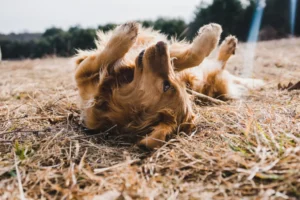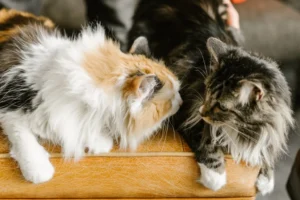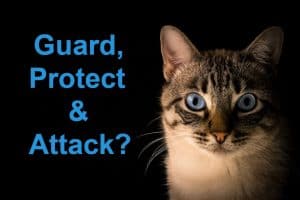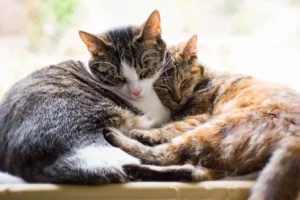Cats have a peculiar habit of rolling in dead animals, much to the confusion of their human companions. But why do they engage in such behavior? Let’s explore the reasons behind this strange feline tendency.
Cats roll in dead animals as a way to mask their own scent and potentially communicate with other animals. It may seem distasteful to us, but to cats, it serves a practical purpose in the wild. This behavior is rooted in their instincts and serves as a survival mechanism.
Instinctual Behavior
Cats rolling in dead animals may seem perplexing to us, but it actually stems from their instinctual behavior. In the wild, cats would mask their scent with that of their prey to avoid detection by potential predators. This behavior has carried over to our domestic feline friends, even though they may not need to hide from predators in the comfort of our homes. Rolling in dead animals helps cats maintain their primal instincts and survival skills, a testament to their wild ancestry.
Communication
Rolling in dead animals may also serve as a form of communication for cats. When outdoor cats bring home their ‘prizes’ and roll in them, they may be sending a message to other animals in the area about their hunting prowess. Additionally, within a multi-cat household, rolling in dead animals can help establish dominance and hierarchy. It’s almost like a feline version of leaving a calling card to assert their place in the social order.
Extra Insight: Cats have scent glands located on their cheeks, chin, and forehead, which release pheromones that are spread onto the dead animal when they roll in it. This marking behavior helps cats leave their scent and claim ownership of their ‘find’, marking it as their territory.
Scent Masking
Cats have a natural instinct to mask their scent, especially when hunting or trying to avoid predators in the wild. By rolling in dead animals, they can camouflage their own smell with the scent of the carcass, making it easier to sneak up on prey or remain undetected by larger animals. This behavior dates back to their ancestors, who relied on this technique for survival.
This behavior is particularly prevalent in wild cats, as they rely heavily on their hunting skills to survive in their natural habitat. Domestic cats may exhibit the same behavior, although it is not as necessary for their survival. However, this instinctual behavior is still present in many domestic cats, even if they are well-fed and do not need to hunt for their food.
An interesting fact is that rolling in dead animals serves as a form of communication for cats. When a cat returns home smelling like another animal, it can inadvertently convey information to other cats in the household about its activities outside. This behavior is not only instinctual but serves as a means of social interaction among feline companions.
Domestic Cats vs. Wild Cats
When it comes to domestic cats, their behavior of rolling in dead animals can be attributed to their innate instincts. Despite living in a more controlled environment compared to wild cats, domestic cats still carry the natural instincts of their ancestors. This behavior can sometimes be seen in domestic cats as a way of exercising their hunting skills or simply as a way to mark their territory.
On the other hand, wild cats such as lions, tigers, and cheetahs rely on this behavior as a survival tactic. Wild cats need to blend in with their surroundings to effectively hunt prey or avoid detection by predators. They use the scent of dead animals to mask their own scent and increase their chances of a successful hunt or staying hidden from potential threats.
One unique insight to consider is that while domestic cats may not need to roll in dead animals for survival, this behavior can serve as a form of mental stimulation. Engaging in behaviors reminiscent of their wild counterparts can provide domestic cats with a sense of fulfillment and satisfaction, tapping into their natural instincts and keeping them mentally sharp.
Training and Prevention
If you’re tired of finding your furry friend rolling around in unsavory scents, fear not – there are ways to train your cat out of this behavior. One effective method is to distract them with interactive toys or engaging activities when they show interest in dead animals. By redirecting their attention, you can help break the habit. Consistency is key in training, so make sure to reinforce positive behaviors with treats and praise. Additionally, keeping your cat indoors can reduce their exposure to potential prey, minimizing the chances of encountering dead animals. Creating a stimulating environment with plenty of toys and playtime can also help curb their desire to engage in this behavior. Remember, patience and positive reinforcement are the name of the game when it comes to training your feline friend.
Alternative Explanations
While the exact reason behind why cats roll in dead animals remains a bit of a mystery, some speculate that it could be a form of camouflage or a way to mark territory with foreign scents. Another theory suggests that cats may be trying to bring the scent back to their territory to warn off potential threats. Alternatively, some experts believe that rolling in dead animals could be a way for cats to mask their own scent when hunting. This behavior may stem from their wild instincts and serve as a survival tactic. Whatever the reason may be, it’s clear that cats have complex motivations when it comes to engaging in this puzzling behavior.
Additional Insight:
One interesting perspective to consider is that rolling in dead animals could be a way for cats to communicate with other felines in their social group. By sharing scents through this behavior, cats may be strengthening bonds with their fellow companions or asserting their status within the group. This social aspect adds another layer of complexity to the already intriguing mystery of why cats exhibit this curious behavior.
Curiosity and Fascination
Cats have an innate curiosity and fascination with the natural world around them. When they encounter a dead animal, their keen senses are immediately piqued. Their instinctual behaviors drive them to investigate and understand new scents and sensations. Rolling in a dead animal may be a way for cats to gather information about the deceased creature, almost like a form of investigation.
In addition to satisfying their curiosity, rolling in dead animals can also serve another purpose for cats. By covering themselves with the scent of a deceased animal, cats may be attempting to mask their own scent. This behavior could potentially help them stalk prey more effectively or mark their territory in a subtle yet potent way.
It’s crucial to remember that cats have a complex relationship with their environment. Their behavior towards dead animals may seem strange to us, but it’s an integral part of their natural instincts and behaviors. By observing and understanding these actions, we can gain valuable insights into the minds of our feline companions.
Additional Insight:
- Cats possess a highly developed olfactory system, meaning they have a heightened sense of smell compared to humans. By rolling in a dead animal, they may be utilizing their sense of smell to gather valuable information about the deceased creature and its surroundings. This behavior reflects the intricate ways in which cats interact with their environment.
Remember, our cats’ behavior towards dead animals is a fascinating glimpse into their natural instincts and behaviors. By appreciating their actions through the lens of curiosity and fascination, we can deepen our understanding of our beloved feline friends.
Alex, a passionate animal lover, has experience in training and understanding animal behavior. As a proud pet parent to two dogs and three cats, he founded AnimalReport.net to share insights from animal experts and expand his knowledge of the animal kingdom.









